Blog
Exploring the Captivating World of Indian Instruments and Music
14 Sep '2023
Discover some of the instruments behind the landmark 'Instruments India' sound pack collaboration.
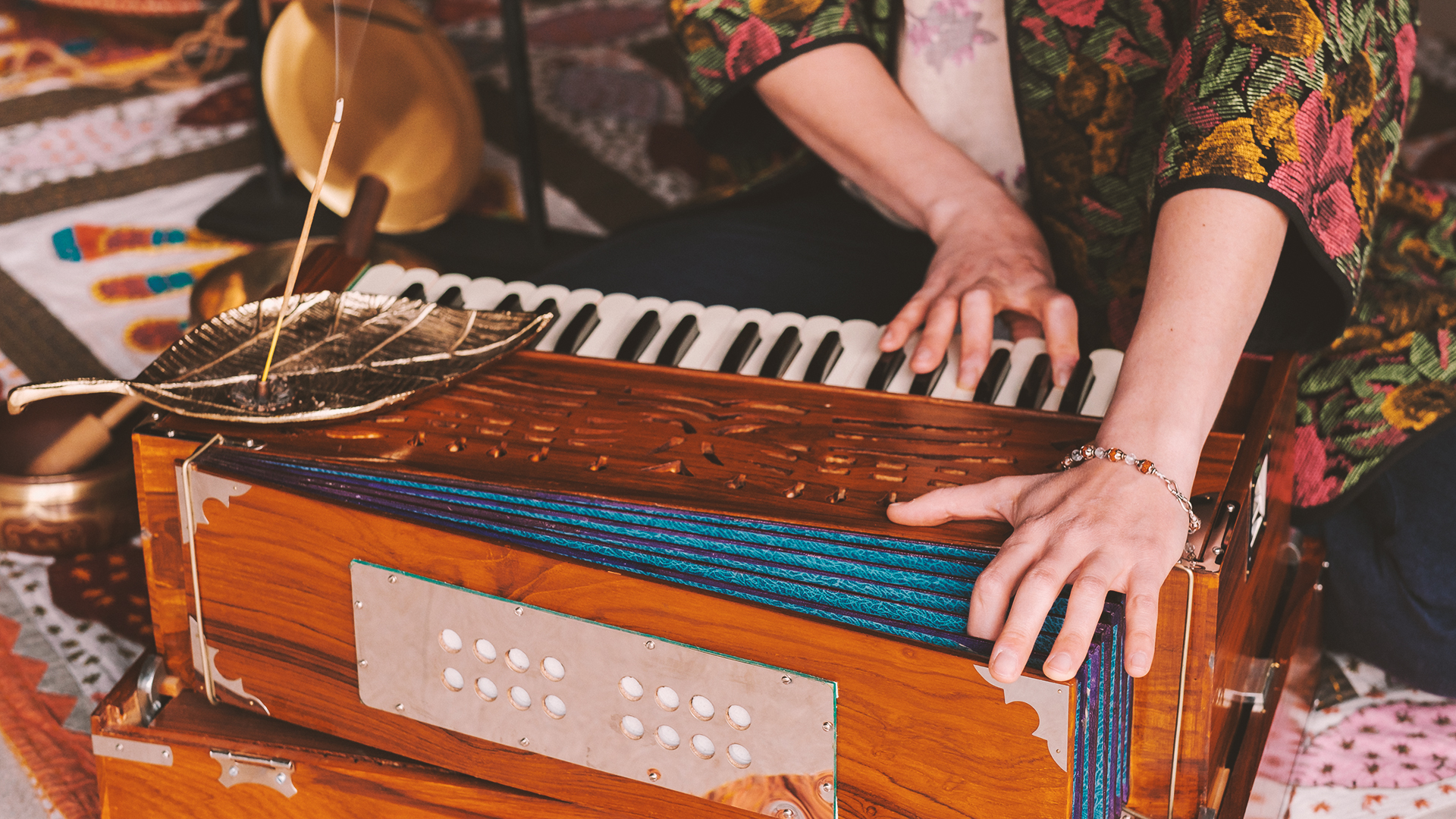
Instruments India is a sample pack created in association with the cultural organisation Milap. The pack features a number of authentic Indian instruments as well as vocals, offering something more exciting and creative to unpack in your next project. You can download a free taster pack from the Instruments India sample pack below.
Instruments in the pack include Tabla, Dilruba, Tar Shehnai, Veena, Sarod and Tanpura. But many electronic producers would be forgiven for not knowing how to use these in a musical context. Fortunately, we’re here to shed more light on a few of the instruments from this landmark pack, explaining how they work and how they sound.
The Harmonium: Unveiling Musical Harmony
When it comes to Indian traditional music, the Harmonium takes centre stage as a beloved and essential instrument. The Harmonium is a wind instrument that produces sound through the clever manipulation of air and reeds. But how does this melodic magic come to life, and what makes the Harmonium so cherished in Indian music?
Unlike the Sarod, the Harmonium is more straightforward in its design. It boasts a set of keys, just like a piano, which the player presses to create sounds. But here's the twist: tucked inside this wooden box are a set of bellows that the musician operates with one hand while playing the keys with the other. These bellows push air over reeds, creating the distinctive harmonious tones that give this instrument its name.
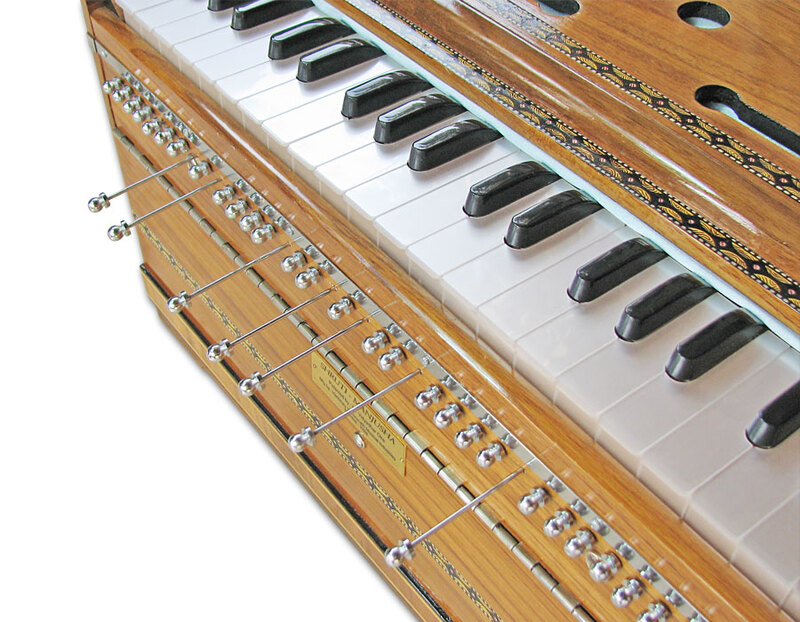
Photo Credit: rupakpk, Wikimedia Commons
Playing the Harmonium is akin to conducting a symphony of breath and music. Musicians skillfully coordinate their fingers on the keys while manipulating the bellows to control the volume and sustain of the notes. The result is a harmonious blend of melodies that can convey deep emotions and intricate rhythms. Whether you're a budding musician or simply an enthusiast of melodious tunes, the Harmonium's warm and expressive sounds will undoubtedly strike a chord in your heart. Its timeless charm and versatility make it a cherished companion in the world of Indian music, weaving melodies that resonate across cultures and generations.
The Sarod: A Melodic Marvel
If you're diving into the enchanting world of Indian classical music, you're bound to come across the mesmerizing Sarod. This traditional instrument is a true gem in the world of music, known for its soul-stirring melodies and intricate craftsmanship. Before we delve into its unique context, let's first get a handle on what the Sarod is and how it creates those magical tunes.
The Sarod doesn't rely on frets like a guitar or keys like a piano. Instead, it features a smooth, metal fingerboard and four to six melody strings, along with sympathetic strings beneath. The player plucks and strikes the strings with a coconut-shell pick, named “Jaba" or “Java” These movements, combined with deft fingering, give rise to the distinct, soulful sound of the Sarod.
The sarod that features in Instruments India is that of Dr Rajeeb Chakraborty, a master player and composer.
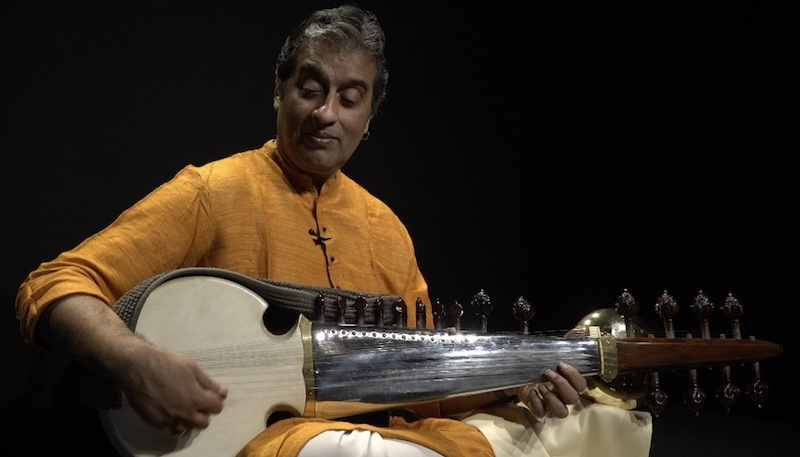
The Sarod is as much an extension of the musician's soul as it is an instrument. Skilled players employ their fingers to slide and press the strings while simultaneously plucking or striking them. This dexterity allows for a wide range of notes, creating the mesmerising glides and bends that make the Sarod so unique. It's a breathtaking dance between the musician's emotions and the instrument's craftsmanship, a dance that has enchanted audiences for centuries. So, whether you're a budding musician or simply an appreciator of beauty in music, the Sarod is a treasure worth discovering. Its rich history and evocative melodies will undoubtedly leave you spellbound.
The Tabla: Rhythmic Heartbeat of India
In the vibrant tapestry of Indian music, the tabla stands out as a rhythmic jewel, setting the heartbeat of countless melodies. These iconic hand-played drums are as visually captivating as they are musically mesmerising. So, let's take a closer look at the tabla, how it's played, and why it occupies such a prominent place in the world of Indian percussion.
The right drum, called the "dayan," typically crafted from rosewood, takes the high-pitched lead role. Its counterpart, the "bayan," made of a wide array of materials, provides the resonant bass. These two drums are a dynamic duo, creating a harmonious interplay of rhythm that forms the foundation of Indian classical and folk music.
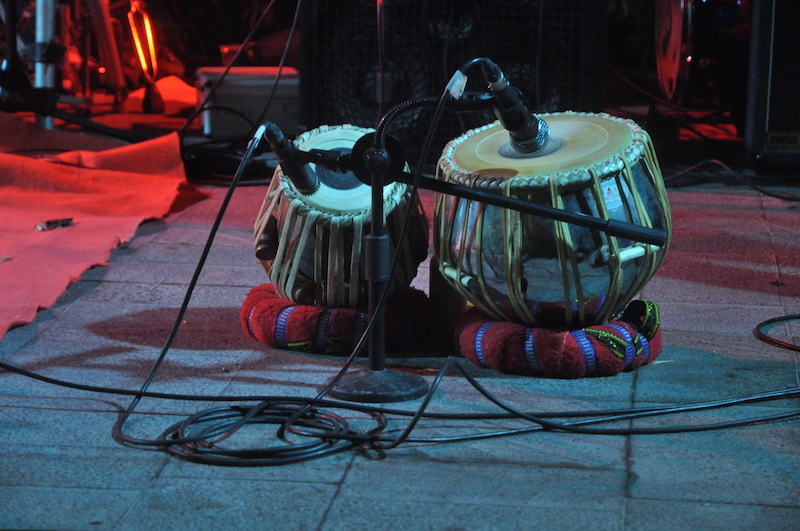
Photo Credit: hilmanasdf
The magic of the tabla lies in the hands of the percussionist. Using a combination of fingers and palms, the player creates a mesmerising array of sounds. Each finger has its assigned role, producing distinct and expressive tones. The fingers dance on the drumhead, conjuring intricate rhythms, while the heel of the hand strikes the rim for those resonant, resonating bass notes.
What truly sets the tabla apart is its ability to communicate emotions and stories purely through rhythm. It's not just an instrument; it's a storyteller, conveying joy, sorrow, and everything in between. Whether you're a budding percussionist or a lover of lively beats, the tabla invites you to join the rhythmic journey, where every stroke is a tale waiting to be told. Its timeless appeal and rich cultural significance make it a cherished treasure in the world of music, inviting you to tap into the vibrant pulse of India's musical heritage.
Ghungroo: Dancing to the Jingle of Joy
In the world of Indian dance and music, the ghungroo is the embodiment of sheer joy and rhythm. These delightful, tiny bells are not just accessories; they're the very heartbeat of traditional Indian dance forms. So, let's delve into what makes the ghungroo so special, how it's worn, and why it's a cherished component of India's rich cultural heritage.
The ghungroo is essentially a string of small, metallic bells, often made of brass or copper, tied together in a cluster. These clusters are carefully woven onto a sturdy, fabric strap, creating a musical anklet. When a dancer wears these anklets and moves with grace and vigour, the ghungroo comes to life, producing a magical jingle that complements the dance's rhythm and melody.
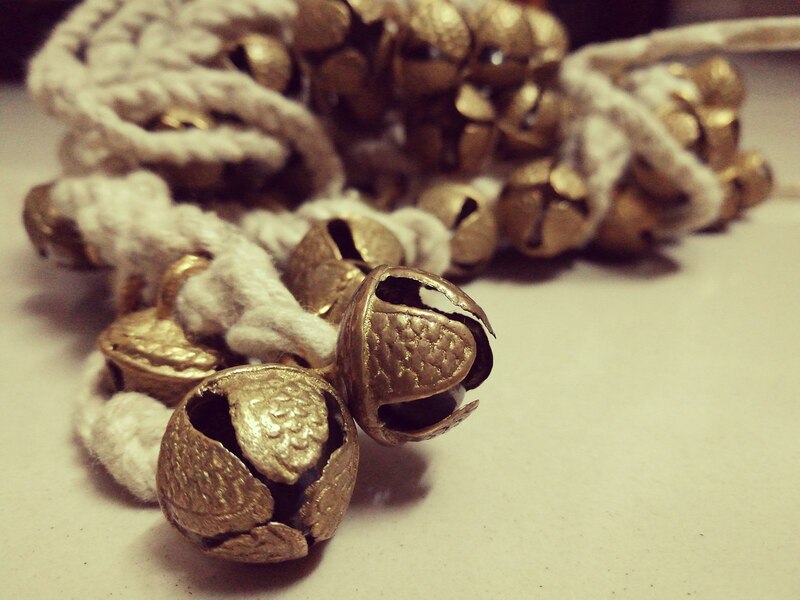
Photo Credit: Kadiv on Wikimedia Commons
Wearing ghungroos requires a dancer's careful skill and precision. Each ankle usually carries a set of ghungroos, and the dancer's footwork orchestrates the rhythm. The ghungroos add a layer of auditory delight, accentuating the percussive beat of the accompanying music and enhancing the visual spectacle of the dance.
Whether you're an aspiring dancer or a fan of the art, the ghungroo beckons you to immerse yourself in the enchanting world of Indian dance. It's not just an accessory; it's a medium through which dancers express their emotions and stories. The ghungroo embodies the essence of celebration, connecting the soul to the joyous rhythms of India's diverse dance traditions, leaving you tapping your feet to its lively tunes.
The Tar Shehnai: A Melodic Whirlwind
In the kaleidoscope of Indian music, the tar shehnai stands as a unique and enchanting bowed string instrument. The Tar Shehnai possesses a distinct charm that captivates audiences with its ethereal melodies. So, let's take a closer look at the tar shehnai, understand its intriguing design, and appreciate why it's an integral part of India's musical heritage.
The tar shehnai doesn't use reeds like the conventional shehnai. Instead, it relies on strings. These strings, usually made of steel, are attached to a wooden board and amplified at the bottom by a metal cone. When the musician plays this instrument, the strings vibrate, producing hauntingly beautiful sounds that evoke a sense of serenity and depth. Similar to a western guitar, the strings pitch can be modulated in pitch by placing pressure on them up and down the board.
Whether you're a budding musician or an enthusiast of soulful tunes, the tar shehnai invites you on a mesmerising musical journey. Its tranquil melodies have the power to transport you to a world of serenity and introspection. The tar shehnai may not be as widely recognized as its cousins, but it possesses a unique charm and grace that is impossible to ignore, making it a treasured gem in the world of Indian music.
FAQs
What are the traditional musical instruments of India?
The sitar, sarod, tambura, sahnai, sarangi, and tabla are all commonly found in an Indian composition. It is also not uncommon to find a violin in Indian music as well.
What is the most common solo instrument in Indian music?
The sitar. This would play the equivalent role of an electric guitar in a western band and can be exclusively used as a solo instrument.
What is the oldest Indian instrument?
The Veena. This instrument has been illustrated being used all the way back in the early 6th century.
What is the hardest Indian instrument to play?
The sarangi is known to be a particularly difficult instrument to play. It is bowed, similar to the violin, but great detail is put into bending the strings for different articulations.



